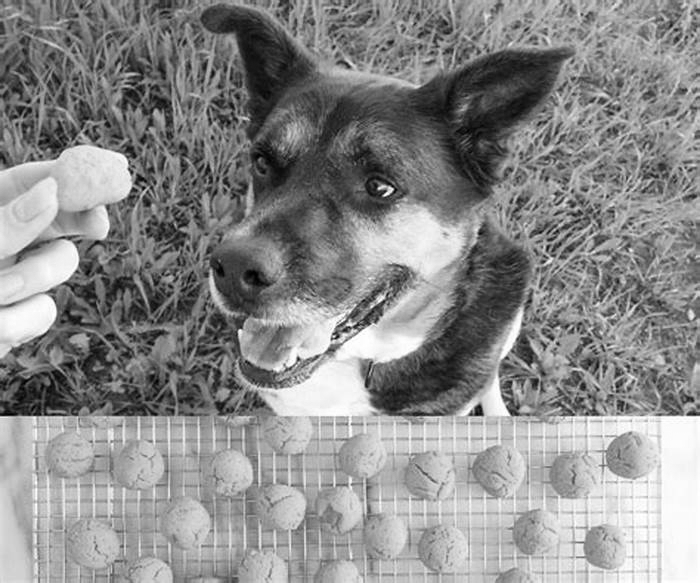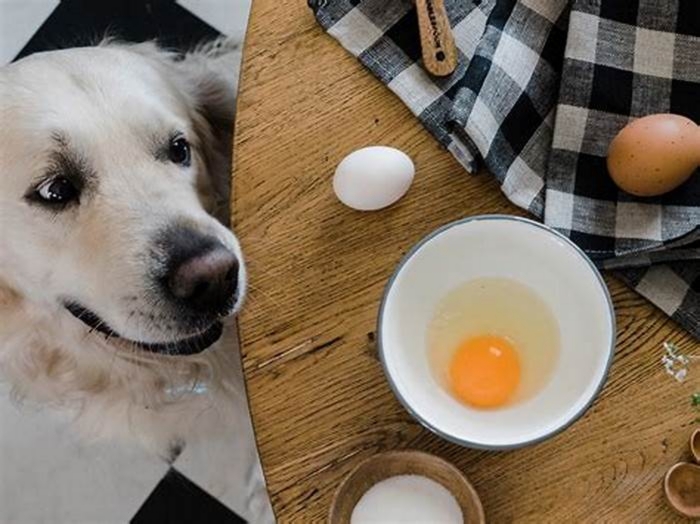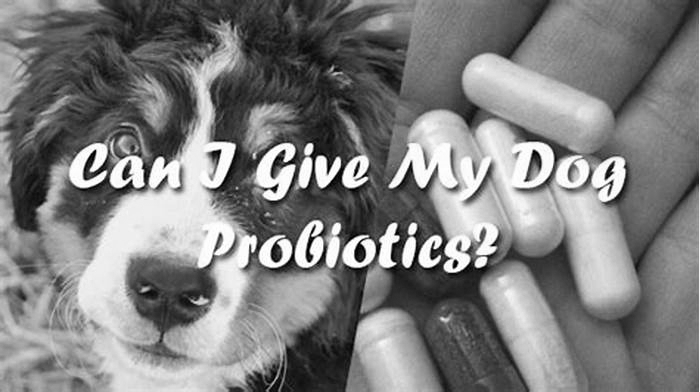Can I give my dog sweet potatoes every day

Can Dogs Eat Sweet Potatoes?
NOTE: Always check with your veterinarian first before giving your dog any new foods, especially people foods. What might be OK for one dog might not be good for your dog, depending on multiple factors, such as their age, health history, health conditions, and diet. Dogs on prescription diets should not be fed any food or treats outside the diet.
Sweet potatoes are a nutrient-packed staple for us humans. But what about our canine companions? If your dog is giving puppy dog eyes for your favorite Thanksgiving side, you may wonder if dogs can eat sweet potatoes.
Good news: vets give the OK when it comes to dogs and sweet potatoes! In fact, sweet potatoes are considered a healthy treat for dogs and offer lots of nutritional value for your pooch.
Just be careful how you go about introducing this fiber-rich starchy root to your pooch. Even though dogs can eat sweet potatoes, dont just toss them any old yam to gnaw on! Keep the following tips top of mind in order to safely feed your dog sweet potato.
Are Sweet Potatoes Good for Dogs?
Sweet potatoes can be a nutritional treat for our canine companions when fed in small amounts. This vitamin-rich carbohydrate is even becoming a common ingredient in commercial dog food and treats. As long as you watch out for extra ingredients that can sneak into human recipes (like butter, sugar, and molasses) and dont offer too much, these starchy root veggies are considered a safe dog treat.
Here are a few reasons sweet potatoes are considered a healthy snack for dogs:
High in fiber: Sweet potatoes are a good source of dietary fiber, which helps dogs with digestion. These special spuds are also considered a complex carbohydrate, meaning they provide a steady source of energy.
Good source of beta-carotene: Like other orange veggies (such as carrots), sweet potatoes contain high amounts of beta-carotene, which the body turns into vitamin A. Vitamin A helps dogs eye health, immune function, and cell growth.
Vitamins and minerals: Sweet potatoes are also a good source of other vitamins and minerals, including vitamin C, manganese, potassium, and iron.
Low glycemic index: As a source of carbohydrates, sweet potatoes have a relatively low glycemic index, which means theyre less likely to cause a spike in your dogs blood sugar. This can be beneficial for dogs with diabetes.
Antioxidants: Sweet potatoes contain antioxidants that may help protect cells from damage caused by free radicals.
Can Dogs Eat Cooked Sweet Potatoes?
Cooked sweet potatoes are fine for your dog to enjoy as an occasional treat. Just be sure to avoid other ingredients that us humans like to add to our sweet potatoes, such as butter, cream, or salt, which can be dangerous for dogs to eat (and even cause pancreatitis in dogs).
Sweet potatoes that have been prepared with salt, sugar, garlic, or other seasonings that are not safe for dogs to consume should also be avoided. As with any new food that finds its way into your dogs bowl, moderation is key.
Can Dogs Eat Raw Sweet Potatoes?
While cooked, unseasoned sweet potatoes are fine in moderation, dont feed your pooch raw sweet potatoes. Uncooked sweet potatoes are difficult for them to chew and can be a choking hazard. They can also cause an upset stomach.
Can Dogs Eat Sweet Potato Skins?
Potato skins are not considered safe for dogs to eat because their chewy exterior can cause dogs to choke and even lead to intestinal blockages. Be sure that any sweet potato offered to Fido is cooked and that the skins (along with any stems or leaves) are removed before they find their way into your pets food bowl.
How to Safely Feed Sweet Potatoes to Your Dog
Whether theyre mashed, baked, or boiled, sweet potatoes are fine for dogs to eat as long as theyre cooked, peeled, and plain. Again, avoid any seasonings or extra ingredients that may be included in human food recipes, such as butter, sugar, or salt.
For a little extra flavor (and fiber), try topping your dogs regular food with a little sweet potato pure at mealtime. Or add a spoonful to their Kong or other food puzzle to keep their brains busy as they snack. Sweet potato is easy to mix in with other dog-friendly ingredients, and most dogs enjoy the taste.
Just be sure not to overdo it! Treats (including veggies like sweet potatoes) should only make up 10% of your dogs overall calories. The other 90% should be from a diet of well-balanced dog food.
How Much Sweet Potato Can a Dog Eat?
When feeding your dog cooked, plain sweet potato, start slowthe high fiber content in sweet potatoes may cause gastrointestinal upset. See how your pup reacts to a small amount before giving them a full serving size.
Here are some general guidelines for how much sweet potato is safe for dogs to eat in a day, based on their weight:
Extra-small dog (220 pounds): 1 teaspoon
Small dog (2130 pounds):12 teaspoons
Medium dogs (3150 pounds): 23 teaspoons
Large dogs (5190 pounds): 12 tablespoons
Extra-large dogs (over 90 pounds): 34 tablespoons
Note that these are just general guidelines. Its always best to check with your veterinarian before making major changes to your dogs diet.
What Other Vegetables Can Your Dog Eat?
Some other veggies that are considered safe for dogs include:
Featured Image: iStock/SolStock
Can I feed sweet potato to my dog everyday?
Can I feed my dog sweet potato everyday?
My simple answer to this question is no- you shouldnt feed your dog sweet potato everyday.
Although sweet potato contains lots of great nutrients, they are also very high in carbohydrates and they contain a massive amount of vitamin A.
This makes sweet potatoes a great occasional addition to your dogs food but not something that should be appearing daily in the bowl.
Another reason why Im hesitant to recommend feeding your dog sweet potatoes everyday is that your dog would benefit from more variety.
If you are going to all the effort of adding sweet potatoes to a dogs diet, why not mix it up with other vegetables?
I have written articles on the pros and cons of feeding green beans, broccoli, celery or cabbage to your dogs.
That way your dog benefits from a more varied boost of vitamins and minerals, more textures and flavours.
But what is so great about the humble sweet potato?
What nutrition is there in sweet potatoes?
When looking at the nutrition of a sweet potato, it is important to state that all the values are for a serving of 100 g.
Not only that but the values in this section are for boiled sweet potatoes.
A general overview of nutrition shows that boiled sweet potatoes are over 4% fat, 17% carbohydrate of which 5 % is sugar and 2.5 % is fiber.
Moving onto the vitamins, sweet potato is rich in beta carotene (which can be converted into vitamin A).
This is great with your dogs eyesight.
And as an antioxidant it also may help to prevent certain types of cancer and promote cognitive function.
Sweet potatoes contain quite high levels of vitamin B6 and vitamin C.
Vitamin B6 helps with metabolism and keeps cells in tip top condition.
Vitamin C is important in making sure that tissues within a dog are nice and healthy.
The biggest mineral present in a sweet potato is copper- which helps with muscles and bones.
Why do some commercial dog foods have sweet potatoes in them?
Sweet potato is used in many dry commercial dog foods.
It plays an important role in grain free food, where it normally replaces wheat as an ingredient.
Dogs that go on a grain free diet normally have a wheat or gluten intolerance.
No one knows exactly what percentage of dogs are gluten intolerant- the most severe form of this, celiac disease affects around 1% people worldwide
Fresh sweet potato vs canned
It might come as a surprise to you that there are some subtle differences between the nutrients in fresh sweet potato and canned sweet potato.
The fibre in the canned variety is lower (1.7% vs. 2.4%) as is the sugar content (4.7% vs 5.5%) but the calories are slightly higher (123 vs 109.)
The amount of vitamin A in the canned variety is slightly more than half (396 to 764 mcg) The amount of vitamin B6 is about equal (.207 mg vs .183 mg) but the amount of vitamin C is far higher in canned sweet potato (25 mg vs 12 mg.)
As far as minerals go, there is more copper in canned sweet potatoes than fresh sweet potatoes- .132 mg vs .089 mg.)
But what about the difference between raw and cooked sweet potato?
Should I feed sweet potato raw or cooked?
Well, well, well.
Would you believe it?
A quick comparison between raw and boiled sweet potatoes shows how much more nutritious raw sweet potatoes are.
For instance, raw potatoes have fewer calories (86 vs 109) , hardly any fat (0.1 vs 4.3 %), more fiber (3 vs 2.4%) and much less sugar (4.2 vs 5.5%) than their cooked counterparts.
And the real stand out number is how little fat there is in raw sweet potato.
Next lets compare the vitamins.
| Raw | Boiled | |
| Vitamin A | 14187 IU | |
| Beta carotene | 8509 mcg | 8968 mcg |
| Vitamin B6 | .209 mg | .183 mg |
| Vitamin C | 2.4 mg | 12.1 mg |
I guess that the headline here is the huge amount of vitamin A in raw sweet potatoes.
14187 IU is nearly three times the recommended daily amount for humans.
And that is over 28 times the recommended amount for dogs.
I have calculated this from the charts that I created on this page.
And remember that beta carotene is a substance that the body converts into vitamin A, adding to the colossal content in raw sweet potatoes.
Now boiled sweet potatoes dont have any pure vitamin A in but they have more beta carotene in than their raw cousins.
As I said, those amounts of beta carotene are very, very big.
But I dont know how that beta carotene translates into vitamin A
The amount of vitamin B6 is slightly higher in the raw variety of sweet potatoes rather than the boiled variety.
But both amounts are slightly more than the recommended amounts for dogs.
As far as dogs are concerned, they dont need vitamin C in their diet because their body can manufacture it in their own livers.
Vitamin C in foods wont harm a dog in any way, it will just help to boost their system.
Some think it might help protect dogs against free radicals.
Moving onto minerals, realistically the only one of any note is copper.
We have already said that copper is used in a dogs body to help maintain bones and muscles.
Raw sweet potatoes have almost double the amount of copper (.151 mg vs .089 mg) than boiled sweet potatoes.
This is a much lower concentration than dogs generally need in their diets.
Enough of the heavy stuff. I want to discuss something a bit easier next- the best way to cook sweet potatoes.
How to cook sweet potatoes for my dog?
As we have seen in the previous section, raw sweet potatoes pack quite a punch and there is nothing wrong with feeding them to your dogs raw.
Raw vegetables are harder for your dog to digest than cooked vegetables but you can get around this by cutting them into smaller chunks.
Feeding raw vegetables is easier, faster and with less mess than cooking them.
But, if you still want to feed them to your dog cooked, what is the best way?
Although Im a keen fan of roasted sweet potatoes or sweet potato chips myself my dogs dont get to them in this form.
This is because by roasting them you are destroying more of the nutrients and you are cooking them in a bit of oil, which you dont really want into your dogs diet.
My dog friendly approach is to steam them.
This is a very gentle way- it makes them softer and therefore easier to digest but they retain most of their vitamin and mineral goodness!
I steam my sweet potatoes for about 10 minutes but they are cut into 2 cm chunks.
In terms of texture, Im looking for a bit of softness in the potato but I dont want to steam it for so long that it is coming apart.
Soft enough to just poke the end of a knife in with little resistance.
Should dogs eat sweet potato skin?
To me there is no reason to feed your dog sweet potatoes with their skins on.
It is well known that vegetable skins are an incredibly rich source of nutrients and it just means less work for us which means we are more likely to do it.
A vegetable skin contains lots of fibre which might concern some owners because it is a vegetable with lots of fiber in it.
But if you are concerned by this, just leave the skin on the sweet potato and feed your dog a smaller portion.
Just one final word of caution about feeding vegetable skins (and this is funny coming from me because I can be a bit lax about rinsing vegetables) give them a thorough rinse to get rid of any stray direct or coating of chemicals and pesticides.
Can a dog have too much sweet potato?
Yes, dogs can have too much sweet potato.
It is loaded with vitamin A which might cause harm in the longer term.
There is such a thing as vitamin A poisoning which is a condition that takes years to develop but can have some nasty and irreversible consequences- one of which is arthritis.
Although, on the plus side, excessive sweet potato consumption isnt listed as a probable cause!
The other nutrients to be mindful of are carbohydrates.
Raw sweet potato is 20% carbohydrate (of which 4.2% is sugar) and boiled is 17% carbohydrate (of which 5.5 % is sugar.)
That is a lot of carbs and sugars, and some of the negative effects of this include encouraging the growth of harmful bacteria within a dogs body.
Another side effect of a dog eating too much sweet potato is that their poop will turn orange.
I know this from personal experience.
Of having a dog that has orange poop, rather than it happening to myself!
Is sweet potato better for my dog than pumpkin?
This is a very interesting comparison and it depends how you might define better.
Lets take a look at the nutritional facts.
| 100g serving | Sweet potato | Pumpkin |
| Water content | 77.3% | 91.6% |
| Total fat | .1% | .1% |
| Carbohydrate | 20% | 6.5% |
| Fibre | 3% | .5% |
| Sugar | 4.2% | 2.8% |
| Calories | 86 | 26 |
| Vitamin A | 14187 IU | 8513 IU |
| Vitamin B6 | .209 mg | .061 mg |
| Vitamin C | 2.4 mg | 9 mg |
| Copper | .151 mg | .127 mg |
| Manganese | .258 mg | .125 mg |
The first real difference is in the water content.
Pumpkin has nearly 15% more water in it than sweet potato, which is part of the reason why it is only 26 calories per 100 g serving as opposed to 86 calories for sweet potato.
Another large difference is in the carb content. Sweet potato is 20% carbs whereas pumpkin is only 6.5%!
Although sweet potato has six times the fibre (3 % vs .5 %) it also has one and a half times more sugar (4.2% vs 2.8%.)
The fibre content interests me because pumpkin is often lauded as a diarrhea remedy for dogs because it is high in fibre.
As you can see fresh pumpkin isnt relatively speaking, high in fibre.
Although- get this- canned pumpkin is.
Moving onto vitamins, sweet potato has far more vitamin A than pumpkin but pumpkin is bursting with far more beta carotenes which the body turns into vitamin A so Im not too sure that there is too much of a difference there.
Whereas sweet potato is a richer source of vitamin B6, pumpkin has more vitamin C.
And sweet potato wins when it comes to how much copper and manganese it contains.
So, although these two vegetables are the same colour, in many ways they are completely different.
It all depends what your dogs needs are!
How much sweet potato should I feed my dog?
In answering this question, I am focusing on the amount to feed your dog as a top up to their main meal.
And not how much sweet potato to feed a dog with diarrhea, for instance.
A common theme running through this article is how abundant and nutritious sweet potatoes are.
And because of this, I would only feed your dog a few tablespoons.
So for my sixty pound (thirty kg) Golden Retrievers, I would feed them probably a maximum of three tablespoons each.
If you have a larger dog you can feed it up to four tablespoons.
And then for the smallest breeds of dogs like Chihuahuas or Shih Tzus, feed them less than one tablespoon.









